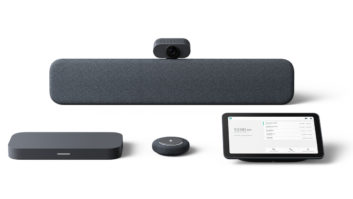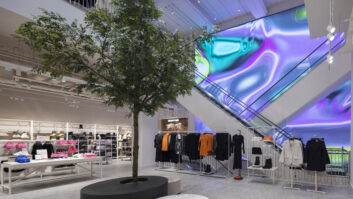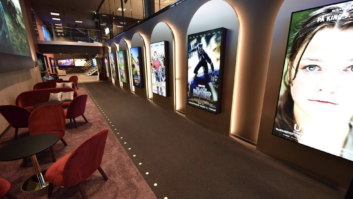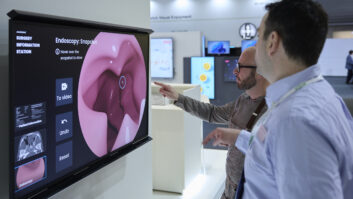During the past five years, it’s not been hard to find regular articles predicting the slow decline – or worse – of high-street retail and other off-line outlets. With high business rates and energy costs encouraging many retailers to reduce their physical estates, it sometimes appeared that online retail was set to dominate. Then, of course, we had a pandemic and many stores were shuttered completely for long periods anyway.
But if this narrative seems fairly clear, then the reality is actually more complicated. In the UK, the latest ONS figures (for March 2023) do point to a new drop in retail sales volumes – but of a fairly modest amount (0.9%) and that following a modest increase (1.1%) in the previous month. And contrary to what some might have expected, non-store retailing (predominantly online sales retailers) have also declined – by 0.8% in the latest period.
 Meanwhile, the British Retail Consortium has been hinting at a possible resurgence in the second half of 2023 on the expectation that “inflation slows and consumer confidence improves, with growth of 3.6% to 4.7% compared with 1% to 2.3% in the first half”.
Meanwhile, the British Retail Consortium has been hinting at a possible resurgence in the second half of 2023 on the expectation that “inflation slows and consumer confidence improves, with growth of 3.6% to 4.7% compared with 1% to 2.3% in the first half”.
These are not the figures of triumphant economic periods, but then we aren’t remotely living through one of those. But it does indicate that there is plenty to play for – not least in physical retail, where it appears that absence may have made the consumer’s heart grow fonder.
ENCOURAGING SIGNS
“I do think the pandemic has shown that people like to leave the house more than not,” says Logan Helps, brand development manager Europe at Audio-Technica. “I certainly appreciate retail more because I couldn’t go there for a year or so. I also think that awareness of the experience of retail is encouraging more retailers [to invest in AV].”
For Cris Tanghe, vice president product Europe at display solutions provider Leyard Europe, it’s linked to a heightened awareness of offline’s role as a counterpoint to online, where much of the actual purchasing may take place. “So now stores aren’t always your prime countertop selling locations, but are becoming [environments] where you can experience the brand and its goods,” he says. “Hence the rise of flagship experience stores, where digital elements have a prominent position; they create an atmosphere, allow interaction, and show branding or other commercial content.”
NOTABLE TRENDS
It should come as little surprise to discover that one of the most notable trends post-pandemic is a continued shift away from LCD displays towards LED elements, with a wave of new product launches aiming to ease this migration.
“There has been a dramatic move towards more digital elements in retail stores,” says Tanghe. “When looking more closely at those digital elements, there is also a change of technology, with LCD displays being replaced with more future-proof, feature-rich and creative LED elements.” He adds that Leyard Europe has recently expanded its Made in Europe LED portfolio with the Leyard NEV Series LED display for indoor fixed installation.
 Adam Dover, trade & segment marketing manager at Sony Professional Display Solutions, agrees that retailers are now “more digitally focused”, and are spending time looking at how to create enhanced in-store experiences. “And I think they are aware that an element of tech is required to do that,” he adds.
Adam Dover, trade & segment marketing manager at Sony Professional Display Solutions, agrees that retailers are now “more digitally focused”, and are spending time looking at how to create enhanced in-store experiences. “And I think they are aware that an element of tech is required to do that,” he adds.
Awareness of picture quality is at an all-time high, and to this end Sony’s pre-eminent product for retail at present is the BRAVIA BZ30J LED-backlit LCD display with 4K HDR. “It’s an IPS panel, which means it has ultra-wide viewing angles,” remarks Dover, who indicates that the product also resonates with retail’s increased emphasis on sustainability.
Ian Beeley is head of digital display at audio-visual and digital signage supplier and installer Skratch AV (part of the LB Foster Group). He indicates that many brands’ awareness of their public profile evolved during the pandemic, when footfall was not in “specific open spaces, such as train stations and bus shelters.” Ultimately, he thinks that there is now an enhanced focus on “main retail spaces”, including supermarkets, for display-based advertising. “This is something where Asda has really led the way in the use of digital signage to grow brands’ presence,” he says.
Skratch has recently partnered the supermarket for the Asda In Run digital project, which sees in-bay digital advertisement screens being added to stores. Utilising a bespoke Skratch CMS that allows content to be uploaded and scheduled, the result is a series of “bright, dynamic and eye-catching displays”, which add a new level to “traditional” static advertising.
One of the major retail trends of recent years couldn’t help but be called into question by the pandemic: the use of touch screens by consumers.
It would be fair to say that the outlook for touch has become less clear as a result, although you could be forgiven for thinking otherwise if you have walked into a major fast-food chain in recent months.
Albert Baranera, managing director of digital signage software company nsign.tv, outlines the pandemic’s effect on interactivity: “It impacted the digital signage technologies for retail as many of them incorporated solutions to combat viruses in physical spaces, ensuring a safer environment for customers and employees, such as entrance, exit and capacity controls, digital gel dispensers, contact-less shift managers, or sending additional information to the consumer’s mobile phone via QR codes (scan&read).”
 To this end, nsign.tv offers an extensive range of interactivity choices. “We have integrated into our digital signage platform different IOT/RFID solutions, NFC, QR, capacitive sensors (KAS), touch kiosk, Lift&Learn, dynamic pricing and voice recognition systems such as Alexa, generating different types of interactions with retail audiences,” says Baranera. “[In addition] we have developed a facial recognition module integrated into our digital signage platform which allows the content of the displays in the retail stores to be adapted in a segmented or personalised way to the audience present in an establishment at all times. Thanks to facial recognition, our digital signage platform can automatically activate certain content based on gender and/or the age group of whoever is looking at that display at all times.”
To this end, nsign.tv offers an extensive range of interactivity choices. “We have integrated into our digital signage platform different IOT/RFID solutions, NFC, QR, capacitive sensors (KAS), touch kiosk, Lift&Learn, dynamic pricing and voice recognition systems such as Alexa, generating different types of interactions with retail audiences,” says Baranera. “[In addition] we have developed a facial recognition module integrated into our digital signage platform which allows the content of the displays in the retail stores to be adapted in a segmented or personalised way to the audience present in an establishment at all times. Thanks to facial recognition, our digital signage platform can automatically activate certain content based on gender and/or the age group of whoever is looking at that display at all times.”
Dover also indicates that there will continue to be multiple requirements in terms of interactivity: “There’s likely to be a mixture of approaches. [In each case it] may depend on retailers’ strategies and how they want to engage with their audiences.”
INCREASED ENGAGEMENT
Meanwhile, the increasing engagement of retailers with environmental issues is highlighted by Bob Kronman, who is MD of LED displays consultancy Kronman Associates and a partner in project management, installation and displays maintenance company Ledtek Solutions. “ISE was a great demonstration of that because a number of [LED display] manufacturers were focusing on power efficiency and the level of recycling of components,” he says. People in retail and elsewhere are “very concerned”, he adds, and won’t buy something that “isn’t energy efficient and doesn’t have a path to recycling somewhere down the road”.
But while the actual solutions being chosen are critical, Kronman also senses “a recognition that the energy consumption footprint across retail has to be managed better, be it shutting the doors when the air-condition is on or turning displays off at night.”
 Audio has traditionally come after visual in many retailers’ priority list, and to a large degree that probably remains the case. But that doesn’t mean that its importance (and related spending) hasn’t grown over time, especially at the higher-end of the market where a refinement of ideas about what constitutes good in-store audio is evident.
Audio has traditionally come after visual in many retailers’ priority list, and to a large degree that probably remains the case. But that doesn’t mean that its importance (and related spending) hasn’t grown over time, especially at the higher-end of the market where a refinement of ideas about what constitutes good in-store audio is evident.
“It used to be the case that a lot of retailers, especially in fashion, were looking for an audio environment that was more like a club with a strong bass sound and a high SPL,” says Helps. “Post-pandemic, I think that has changed in favour of retailers wanting a more hi-fi-type sound, [with less demand for] loudness.”
Audio-Technica distributes two commercial audio brands with a growing profile in retail, and Helps alludes to buoyant sales. In general, he says, retailers are now more aware of “having high quality audio throughout a store; they know that spending £20 or so on a ceiling speaker isn’t going to cut it.”
UPBEAT PROSPECTS
Despite the obvious challenges to the physical retail sector, most are cheeringly upbeat about the sector’s prospects, underpinned by signs of an increasing focus on quality AV. Moreover, it seems there is plenty of reason for excitement about emerging technologies, too; for example, the scope for AR.
“Simplifying it to the maximum, [AR would enable the user] to navigate through a physical store as if it was an online platform,” says Baranera. “Pointing a smartphone at an aisle of an establishment and displaying navigation guides to a product of interest, displaying AV information when viewing product labels, or showing multimedia elements superimposed on a real image are just a few examples of the applications that AR tech will offer retailers to provide a better – and unique – customer experience.”







